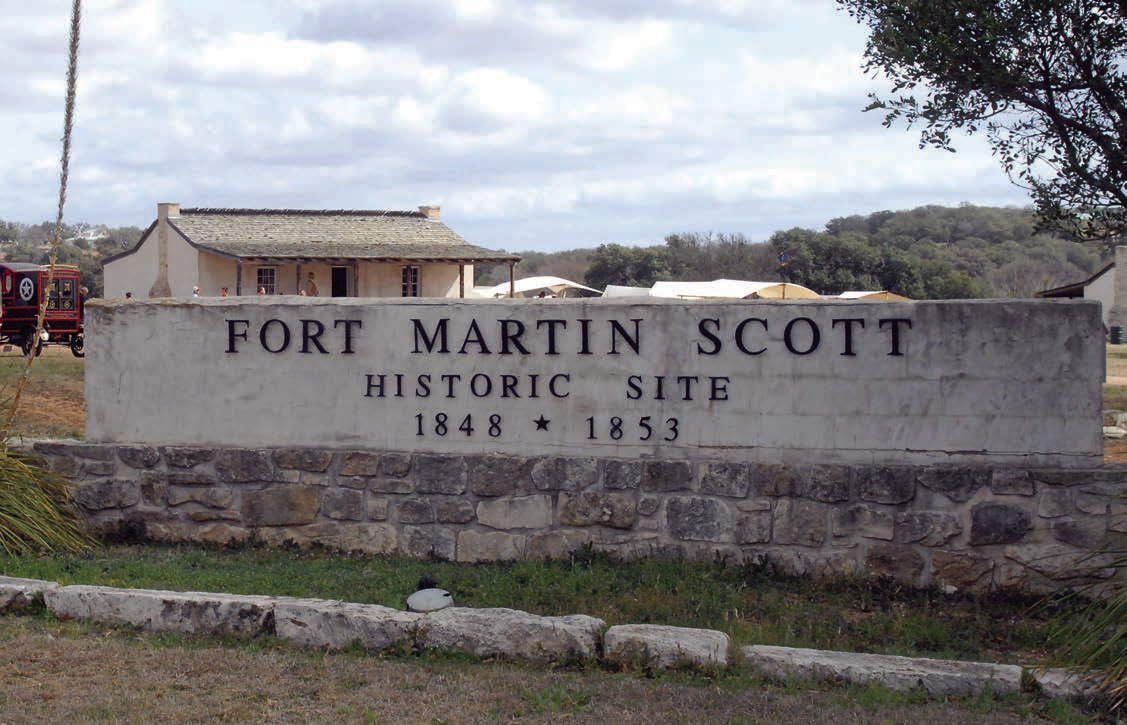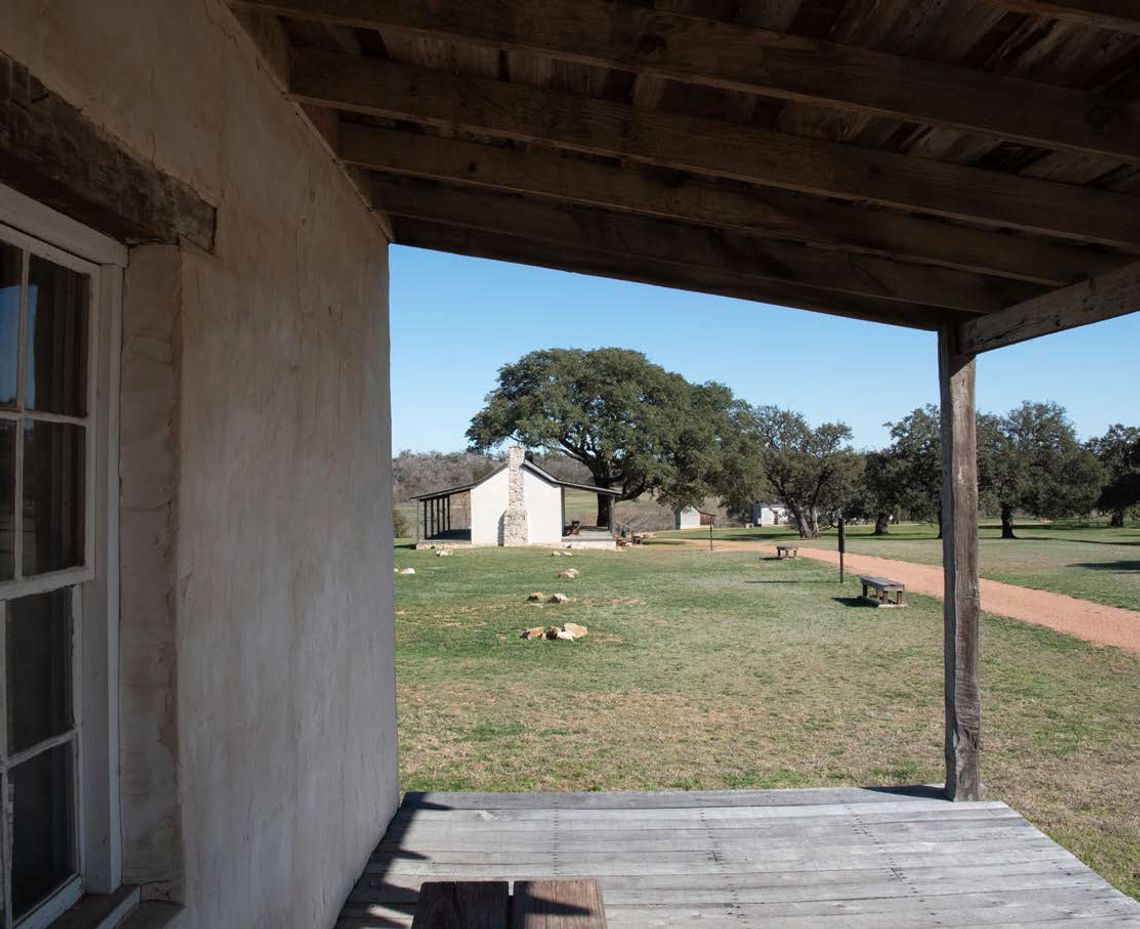This year the fort celebrates its 175th anniversary with special events honoring its heritage.
On the eastern edge of Fredericksburg and adjacent to the Texas Rangers Heritage Center, Fort Martin Scott was the first U.S. Army post on the Texas frontier. Apache and Comanche tribes, Spaniards, Anglo settlers, Latter-day Saints, Texas Rangers and the U.S. Army have all left their footprints at the fort.
With outbreaks of attacks between early settlers and Native Americans, in 1823, a group of frontiersmen was formed to act as “rangers” to protect the citizens, starting what became known as the Texas Rangers.
When Texas became a state in 1845, the Comanche remained north of a site that the Rangers are thought to have used as a camp, on the banks of Barons Creek and the Pinta Trail.
John O. Meusebach and German settlers established the town of Fredericksburg just west of this site in 1846. Latter-day Saints (Mormons) started a town called Zodiac east of Fredericksburg in 1847.
The Germans, Latter-day Saints, Native Americans and Rangers established a cooperative society, supporting each other. The Latter-day Saints started the first lumber and grist mill and were instrumental in helping build the fort and town. The Germans signed a peace treaty with the Comanche in 1847 allowing trade with them for food and supplies.
U.S. Army units arrived in 1848, settling on the Barons Creek site, naming it Camp Houston. This became the first in a string of frontier forts established to help protect Anglos moving west. The camp was renamed Fort Martin Scott in December 1849 after Lt. Col. Martin Scott, who died in the Mexican-American War. Infantry units were followed by horse-mounted dragoons, who led scouting patrols and escorts for the settlers.
In 1850, Indian Agent John Rollins, Army, and Rangers representatives and interpreters met with a group of chiefs on the banks of the San Saba River and forged the Fort Martin Scott Treaty of 1850. Today, the Treaty Stone recognizing the pact is displayed in the fort visitor center.
By 1853, the frontier had moved west and so had the Army. Fort Martin Scott became a supply depot and was permanently abandoned by the Army in 1866.
But the story of the fort doesn’t end there. In 1870, John Braeutigam bought acreage that included the fort guardhouse, their home for 90 years. He created Braeutigam Gardens, which included a saloon, store, race track and the area’s first dance hall. The first four Gillespie County fairs were held in the gardens. But the fairs and gardens ended with the robbery and murder of Braeutigam and his saloon in 1884.
The Braeutigam family farmed the land until 1959 when they sold it to the City of Fredericksburg.
The Fredericksburg Heritage Federation started restoration of the fort that continues today.
This year Fort Martin Scott celebrates its 175th year since its founding with a day full of commemorative events on March 8. A replica of an 1850s Army field hospital was set up on the grounds. The 323rd Army Band performed a concert under the stars. German choirs performed music including both the U.S. and German National Anthems.
A memorial stone made by Llano Memorial Works was made for the event and was presented during a ceremony in which names were read of every known soldier to have died at the fort, followed by the playing of “Taps” by the Army Band.
Several guests spoke at the event including Fredericksburg Mayor Jeryl Hoover.
The fort is a park owned and operated by the City of Fredericksburg. Today, the site includes a visitor center/ barracks, restored officer’s quarters, the guardhouse (the only original building), a blacksmith shop and stone foundations of many of the buildings.
Throughout the year, the fort comes alive with reenactments, storytelling, education days for schools and special events.
For more information about Fort Martin Scott, contact Director of Parks and Recreation Andrea Schmidt at 830-990-2078, or by email at [email protected].

This year Fort Martin Scott celebrates its 175th anniversary with special programs and events.


Comment
Comments